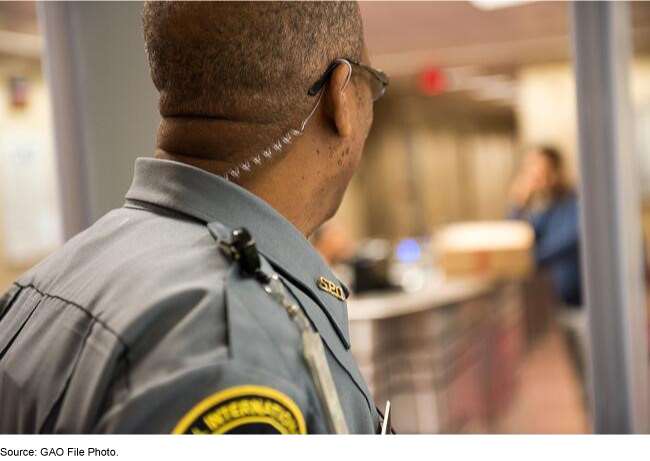Federal Protective Service: Projected Outcomes of the New Fee Structure on Tenant Agencies' Costs
Fast Facts
The Federal Protective Service (FPS) is responsible for protecting more than 9,000 federal buildings and ensuring the safety of the people within them. FPS is completely funded by the fees it charges agencies for its services.
In FY 2020, FPS began calculating its basic security fee for each building based on each building's past use of security services. Previously, this fee was based on square footage.
We project that the new fee structure will result in lower fees for most agencies and significantly higher fees for 3 agencies.

Highlights
What GAO Found
The Federal Protective Service (FPS) within the Department of Homeland Security (DHS) charges a basic security fee to federal agencies for each of the buildings that FPS protects. Prior to fiscal year 2020, FPS calculated the basic security fee according to each building's square footage. However, starting in fiscal year 2020, FPS calculates the basic security fee using a model that charges a minimum basic security fee per building (regardless of square footage) and additional amounts based on each building's historical use of FPS resources. The model incorporates 17 variables for each building, though the model determined that only three drive costs-- the number of service calls, incidents requiring FPS response, and guard posts in the building. The calculation for the fiscal year 2020 basic security fee, as well as the factors considered in the model, are shown below (see figure).
Variables Used by the Federal Protective Service to Develop the Fiscal Year (FY) 2020 Basic Security Fee Equation

GAO's analysis indicates that under the new fee structure, most agencies are projected to pay lower average basic security fees in fiscal years 2020 through 2022 than they did in fiscal year 2019. Specifically, of the 59 agencies that pay a basic security fee to FPS, 40 of these—more than two-thirds— are projected to experience an average decrease in annual basic security fee charges when compared to the amount charged in fiscal year 2019. The median decrease for these 40 agencies is projected to be approximately $266,000. For the 19 agencies with projected increases, the median increase is projected to be approximately $132,000. Of the agencies with a projected increase, the Social Security Administration (SSA) and DHS collectively account for the largest projected average dollar-value amounts over the 3 year period. SSA would experience a projected average annual increase of $22.3 million, and DHS would experience a projected average annual increase of $17.8 million (a projected percentage increase of 60 and 33 percent, respectively).
Why GAO Did This Study
FPS is responsible for protecting more than 9,000 federal buildings and ensuring the safety of the people within them— federal employees, contractors, and visitors, including members of the public. FPS is completely funded by the fees it charges agencies for its services, and does not receive a direct appropriation. In fiscal year 2020, FPS changed the way it calculates the basic security fee it charges to agencies for buildings under its protection. This report describes: (1) the change FPS made in fiscal year 2020 to its basic security fee structure and (2) how this change affects tenant agencies' costs. GAO reviewed FPS documentation, compared FPS data on fiscal year 2019 basic security fees to the average of 3 years of basic security fees (actual fees for 2020 and anticipated fees for fiscal years 2021 and 2022), and interviewed FPS officials.
For more information, contact Catina Bradley Latham at (202) 512-2834 or lathamC@gao.gov.
